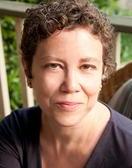
It is long past time to abandon the idea that those who marry across lines of faith simply do not care about religion. The most obvious counter-examples have been the Christian clergy, including Harvey Cox, Donna Schaper, and J. Dana Trent, who have written memoirs about their interfaith marriages. And now, we finally get to read about how a rabbi and her Catholic husband stay deeply engaged in two religions, while embarking on an interfaith marriage.
For many Jewish institutions, the idea of an intermarried rabbi is almost as controversial as, well, the idea of raising children with both religions. The major rabbinical schools all refuse to admit or ordain rabbinical students married to non-Jews. This has forced potential rabbis to live in the “interfaith closet” or abandon their studies, which in turn has finally forced official reconsideration of this policy, at least at one seminary.
Rabbis are going to fall in love, and marry, people from other religions. Rabbi Michal Woll and her Catholic husband, Jon Sweeney, bring us the first dispatch from this new reality. Woll was already a Reconstructionist rabbi when she met Sweeney, an author and religion scholar raised as a Protestant but in the process of converting to Catholicism at the time they met. Together, they have written an intimate and revealing memoir about their courtship and marriage, entitled Mixed-Up Love: Relationships, Family, and Religious Identity in the 21st Century. A lively read, Mixed-Up Love is most compelling as a textured and nuanced portrait of one brave interfaith marriage. (Those interested the broad, historical sweep of their ambitious subtitle might want to also read Erika Seamon’s recent academic book, Interfaith Marriage in America.)
The joint memoir is a particularly useful format for an interfaith couple. One of the earliest examples is Mixed Blessings by Rachel and Paul Cowan, which described an interfaith marriage in the 1960s. Rachel eventually converted to Judaism and was ordained as a rabbi, and their book, while useful, heavily promotes the choice of Judaism, and conversion. In contrast, Mary and Ned Rosenbaum, in another early joint memoir, Celebrating Our Differences, testified to the fact that their marriage strengthened, rather than diminished, their own devotion to Catholicism, and Judaism, respectively. While Ned was not an ordained rabbi, he was a Jewish studies scholar and lay leader of Jewish communities. In their memoir, Mary and Ned recount their pioneering interfaith marriage with great wit and honesty and tenderness, and also describe how they gave their three children education in both religions.
Woll and Sweeney have decided to raise their daughter Jewish, and some of the reasons for their choice are obvious. Woll describes one congregation that refused to hire her as a rabbi because she is married to a Catholic. It seems evident that at least for now, an intermarried rabbi will have to raise children “exclusively Jewish” in order to be accepted by most Jewish institutions.
Nonetheless, Woll and Sweeney talked to couples who had made different choices for their interfaith children, and researched some of the communities designed to support families raising children with both religions. In their book, they are thoughtful and open-minded about the possibility of raising children with both, although they chose another path. I found myself agreeing with the authors on many points: the importance of community support for interfaith families, the idea that interfaith marriage can be inspiring as well as challenging, and the importance for children of religious ritual in the home. In their conclusion, Sweeney and Woll write that there are “so many possibilities for creating lives full of spiritual meaning and practice in the world.”
As in Celebrating Our Differences, Woll and Sweeney each contributed their own thoughts to this book in alternating passages, so that we understand their separate perspectives. Both their marriage and their child are still very young, but I suspect, and hope, that a sequel will eventually follow. In the meantime, Mixed-Up Love, the first memoir by a rabbi and a Catholic who share a marriage, is an important addition to the literature, describing the rewards and challenges of one of the many inevitable love stories in our increasingly interfaith world.

